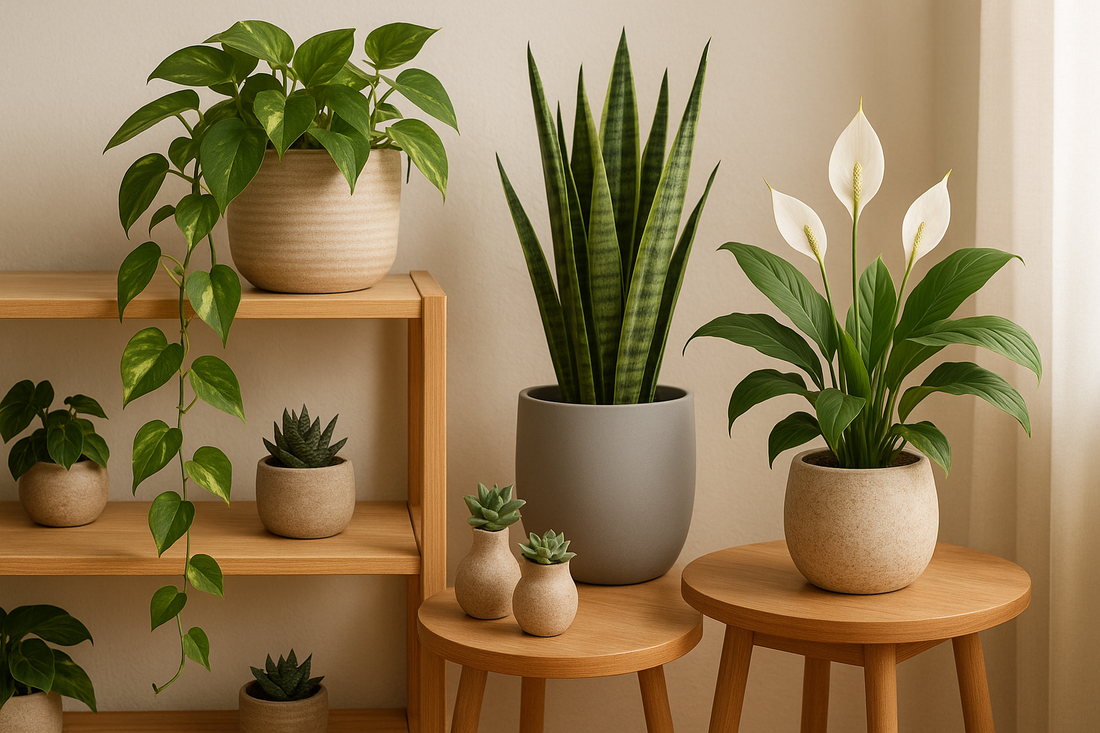
Complete Guide to Indoor Plant Care: Selection & Maintenance
Share
Introduction
Indoor plants bring life, color, and fresh air to your home. But choosing the right plants and knowing how to care for them can be overwhelming for beginners. This comprehensive guide will help you select the perfect plants for your space and keep them thriving year-round.
Benefits of Indoor Plants
Before diving into care tips, let's explore why indoor plants are worth the effort:
- Air Purification: Many plants naturally filter toxins and improve indoor air quality.
- Stress Reduction: Studies show that caring for plants reduces stress and anxiety.
- Aesthetic Appeal: Plants add natural beauty and complement your home decor.
- Humidity Control: Plants release moisture, helping to maintain comfortable humidity levels.
- Productivity Boost: Having plants in your workspace can improve focus and creativity.
Choosing the Right Plants for Your Space
Not all plants are created equal. Consider these factors when selecting indoor plants:
Light Conditions
- Low Light Plants: Snake plants, pothos, ZZ plants - perfect for rooms with limited natural light or home offices away from windows.
- Medium Light Plants: Spider plants, peace lilies, philodendrons - thrive in bright, indirect light near windows.
- High Light Plants: Succulents, cacti, fiddle leaf figs - need direct sunlight for several hours daily.
Maintenance Level
- Low Maintenance: Snake plants, pothos, succulents - perfect for beginners or busy people.
- Medium Maintenance: Monstera, rubber plants, prayer plants - require regular attention.
- High Maintenance: Orchids, ferns, calatheas - need specific conditions and frequent care.
Space Considerations
- Small Spaces: Succulents, air plants, small pothos - perfect for accent tables and shelves.
- Medium Spaces: Snake plants, peace lilies, rubber plants - ideal for corners and side tables.
- Large Spaces: Fiddle leaf figs, monstera, bird of paradise - make statement pieces in living rooms.
Essential Plant Care Basics
1. Watering
Overwatering is the #1 killer of indoor plants. Follow these guidelines:
- Check Soil Moisture: Stick your finger 1-2 inches into the soil. If it's dry, water; if moist, wait.
- Water Thoroughly: When watering, ensure water drains from the bottom of the pot.
- Frequency Varies: Most plants need watering every 1-2 weeks, but this depends on light, humidity, and season.
- Use Room Temperature Water: Cold water can shock plant roots.
2. Light Requirements
- Observe Your Plant: Yellowing leaves may indicate too much light; leggy growth suggests too little.
- Rotate Regularly: Turn plants weekly to ensure even growth.
- Supplement if Needed: Use grow lights in dark spaces during winter months.
3. Humidity
- Misting: Spray tropical plants with water 2-3 times per week.
- Grouping: Place plants together to create a humid microclimate.
- Pebble Trays: Set pots on trays filled with water and pebbles for passive humidity.
- Humidifiers: Use in dry climates or during winter heating season.
4. Fertilizing
- Growing Season: Fertilize monthly during spring and summer.
- Dormant Season: Reduce or stop fertilizing in fall and winter.
- Dilute Properly: Use half the recommended strength to avoid burning roots.
- Choose Wisely: Use balanced fertilizer (10-10-10) for most houseplants.
Common Problems & Solutions
- Yellow Leaves: Usually overwatering or too much direct sunlight. Adjust watering schedule and move to indirect light.
- Brown Leaf Tips: Low humidity or fluoride in tap water. Increase humidity and use filtered water.
- Drooping Leaves: Underwatering or root-bound plant. Water thoroughly or repot into larger container.
- Pests: Spider mites, mealybugs, or fungus gnats. Treat with insecticidal soap or neem oil.
- Leggy Growth: Insufficient light. Move plant closer to window or add grow lights.
Displaying Your Plants Beautifully
Plants are living decor! Here's how to showcase them:
- Stylish Planters: Choose decorative pots that complement your interior style. Display them in beautiful vases and planters.
- Plant Stands: Elevate plants to different heights for visual interest.
- Shelving: Use wall shelves to create vertical plant displays.
- Groupings: Arrange plants in odd numbers (3, 5, 7) for aesthetic appeal.
- Mix Sizes: Combine large floor plants with smaller tabletop varieties.
Best Beginner-Friendly Plants
Start your plant journey with these foolproof options:
- Pothos: Tolerates low light and irregular watering. Trails beautifully from shelves.
- Snake Plant: Nearly indestructible. Thrives on neglect and low light.
- Spider Plant: Produces baby plants you can propagate. Forgiving of mistakes.
- ZZ Plant: Glossy leaves, drought-tolerant, and low-light friendly.
- Peace Lily: Tells you when it needs water by drooping. Beautiful white flowers.
Conclusion
Indoor plant care doesn't have to be complicated. Start with easy plants, learn their needs, and gradually expand your collection. With patience and attention, you'll create a thriving indoor garden that brings joy and beauty to your home every day.
🌟 Featured Collections
- 🏺 Vases & Planters - Beautiful plant displays
- 📚 Shelving Solutions - Perfect for plant displays
- 🛋️ Living Room Furniture - Create plant-friendly spaces
- 🆕 New Arrivals - Latest home decor
Ready to start your plant journey? Explore our collections and find the perfect planters and furniture to showcase your green friends at TheQuickBuy!
